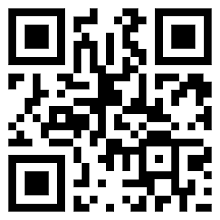The following was published in Inform magazine's January 2010 edition :
###################################
INFORM - Mobile Urban Exploration2009/10/11
by Will Rourk
These coded graphics have been widely adopted in Asia and Europe but are still slow to catch on in the US. However, an art project exploring the potential of physically encoding the built environment took place in New York City in 2004 called Yellow Arrows. The Yellow Arrow project sought to explore new ways of exploring city spaces via mobile technologies in developing what is becoming recognized as the geospatial web. Participants placed yellow arrow markers in public places that they found particularly engaging. The marker would direct its audience - anyone taking notice of the arrows - to send an SMS text message to a number that would then reveal something interesting or particular about the space they currently occupied. In this way, the arrows curated a whole new experience of urban spaces and objects. QR codes are doing much the same today, but more instantly and effectively, connecting people directly to information much the same way that captions do for museum pieces, except that the content accessed through a web browser can be more enriching and expressive than just text.
The future for object hyperlinking most probably will evolve into some non-physical agent of information connection. RFID tags (Radio Frequency Identification) have been widely used for some time now, mostly replacing barcodes as the means of containing retail product information. But the same means of information could be used to encode urban information, broadcast out to mobile device receivers. Another more promising technology is geo location. Currently geo location is becoming the next wave of social networking connecting people to people based on current location determined by your mobile device's GPS. Being in the "right" place could keep you instantly connected and informed. Most of these technologies are free to utilize with free reader apps for most major smart phones and code generators provided by developers such as Kaywa, Upcode, Shotcode and especially Google's Zxing project. With these tools all we need to do is just encode the content and curate our own experiences of the places around us.
For more information about QR codes and mobile tagging technologies please visit Will Rourk's blog at http://rezn8r.blogspot.com or at this QR code:
###################################



